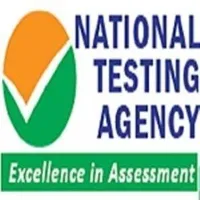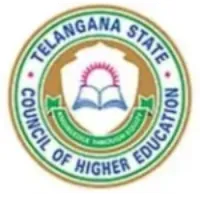Latest Applications Open 2024:
Here Candidates Can get the Official JEE Main Physics Syllabus 2024 declared by NTA. JEE Main Exam is divided into two sections.
The JEE Main Physics Syllabus Section comprises 2 Sections, i.e., Section A and B.
We also have completed JEE Main Syllabus 2024 in PDF and textual format for students.
JEE Main 2024 Physics Syllabus
Section A
Get here Unit wise, and complete the Syllabus Online of Physics Section A for the JEE Main Exam 2024.
Unit 1- Physics and Measurement
- Physics, technology, society, SI units, Fundamental and derived units.
- Most minor count, accuracy and precision of measuring instruments, measurement errors, Dimensions of Physical quantities, dimensional analysis, and its applications.
Unit 2- Kinematics
- The frame of reference. Motion in a straight line: Position-time graph, speed, and velocity. Uniform and non-uniform motion, average speed and instantaneous velocity, Uniformly accelerated motion, velocity-time, position-time graphs, and relations for uniformly accelerated motion.
- Scalars and Vectors, Vector addition and Subtraction, Zero Vector, Scalar, Vector products, Unit Vector, Resolution of a Vector. Relative Velocity, Motion in a plane. Projectile Motion, Uniform Circular Motion.
Unit 3- Law of Motion
- Force and Inertia.
- Newton’s First Law of Motion; Momentum.
- Newton’s Second Law of Motion; Impulse; Newton’s Third Law of Motion.
- Law of conservation of linear momentum and its applications.
- Equilibrium of concurrent forces
- Static and Kinetic friction, laws of friction, rolling friction.
- Dynamics of uniform circular motion: Centripetal force and its applications.
Unit 4- Work, Energy, and Power
- Work was done by constant and variable forces: kinetic and potential energies, work-energy theorem, and power.
- The potential energy of a spring, conservation of mechanical energy, conservative and nonconservative forces: Elastic and inelastic collisions in one and two dimensions.
Unit 5- Rotational Motion
- Centre of the mass of a two-particle system.
- Centre of the mass of a rigid body: Basic concepts of rotational motion: movement of a force, torque, angular momentum, conservation of angular momentum and its applications: the moment of inertia, the radius of gyration.
- Values of moments of inertia for simple geometrical objects, parallel and perpendicular axes theorems and their applications.
- Rigid body rotation, equations of rotational motion.
Unit 6- Gravitation
- The universal law of gravitation.
- Acceleration due to gravity and its variation with altitude and depth. Kepler’s laws of planetary motion.
- Gravitational potential energy: gravitational potential. Escape velocity.
- Orbital velocity of a satellite.
- Geo-stationary satellites.
Unit 7- Properties of Solids and Liquids
- Elastic behaviour, Stress-strain relationship. Hooke’s Law.
- Young’s modulus, bulk modulus, and modulus of rigidity. Pressure due to a fluid column: Pascal’s law and its applications. Viscosity, Stokes’ law. Terminal velocity, streamline and turbulent flow.
- Reynolds number.
Bernoulli’s principle and its applications. - Surface energy and surface tension, the angle of contact, application of surface tension – drops, bubbles, and capillary rise.
- Heat, temperature, thermal expansion: specific heat capacity, calorimetry: change of state, latent heat.
Heat transfer-conduction, convection, and radiation. Newton’s law of cooling.
Unit 8- Thermodynamics
- Thermal equilibrium, zeroth law of thermodynamics, the concept of temperature. Heat, work, and internal energy.
- The first law of thermodynamics.
- The second law of thermodynamics: reversible and irreversible processes. Carnot engine and its efficiency.
Unit 9- Kinetic Theory of Gases
- The equation of state of a perfect gas. Work is done on compressing a gas. Kinetic theory of gases – assumptions, the concept of pressure.
- Kinetic energy and temperature: RMS speed of gas molecules; Degrees of freedom. Law of equipartition of energy.
- Applications to specific heat capacities of gases: Mean free path. Avogadro’s number.
Unit 10- Oscillations and Waves
- Periodic motion – period, frequency, displacement as a function of time. Periodic functions. Simple harmonic motion (S.l l.M.) and its equation; phase: oscillations of a spring -restoring force and force constant: energy in S.H.M. – Kinetic and potential energies: Simple pendulum – derivation of expression for its period; Free, forced and damped oscillations, resonance.
- Wave motion. Longitudinal and transverse waves are the speed of a wave. Displacement relation for a progressive wave. The principle of superposition of waves is a reflection of waves. Standing waves in strings and organ pipes, fundamental mode and harmonics. Beats. Doppler effect in sound.
Unit 11- Electrostatics
- Electric charges: Conservation of charge, Coulomb’s law forces between two point charges, forces between multiple charges, superposition principle and continuous charge distribution.
- Electric field: Electric field due to a point charge, Electric field lines, Electric dipole, Electric field due to a dipole, Torque on a dipole in a uniform electric field.
- Electric flux, Gauss’s law, and its applications to find field due to infinitely long uniformly charged straight wire, uniformly charged infinite plane sheet, and uniformly charged thin spherical shell. Electric potential and its calculation for a point charge, electric dipole and system of charges; Equipotential surfaces, Electrical potential energy of a system of two point charges in an electrostatic field.
- Conductors and insulators, Dielectrics and electric polarization, capacitor, a combination of capacitors in series and parallel, the capacitance of a parallel plate capacitor with and without dielectric medium between the plates, Energy stored in a capacitor.
Unit 12- Current Electricity
- Electric current, Drift velocity, Ohm’s law, Electrical resistance, Resistances of different materials, V-I characteristics of Ohmic and non-ohmic conductors, Electrical energy and power, Electrical resistivity, Colour code for resistors; Series and parallel combinations of resistors; Temperature dependence of resistance.
- Electric Cell and its Internal resistance, potential difference, and emf of a cell, a combination of cells in series and parallel. Kirchhoff’s laws and their applications. Wheatstone Bridge, Metre Bridge. Potentiometer – principle and its applications.
Unit 13- Magnetic Effects of Current and Magnetism
- Biot – Savart law and its application to the current carrying circular loop. Ampere’s law and applications to infinitely long current carrying straight wire and solenoid. Force on a moving charge in uniform magnetic and electric fields. Cyclotron.
- Force on a current-carrying conductor in a uniform magnetic field. The force between two parallel current-carrying conductors-definition of an ampere, Torque experienced by a current loop in the uniform magnetic field, Moving coil galvanometer, its current sensitivity and conversion to ammeter and voltmeter.
- Current loop as a magnetic dipole and its magnetic dipole moment. Bar magnet as an equivalent solenoid, magnetic field lines; Earth’s magnetic field and magnetic elements. Para-, dia- and ferromagnetic substances.
- Magnetic susceptibility and permeability, Hysteresis, Electromagnets, and permanent magnets.
Unit 14- Electromagnetic Induction and Alternating Current
Electromagnetic induction; Faraday’s law, induced emf and current; Lenz’s Law, Eddy currents. Self and mutual inductance. Alternating currents, peak and RMS value of alternating current/ voltage; reactance and impedance; LCR series circuit, resonance; Quality factor, power in AC circuits, wattles current. AC generator and transformer.
Latest Applications For Various UG & PG Courses Open 2024
-
- Parul University | Admissions Open for All Courses 2024. Apply Now
- Chandigarh University | Admissions Open for All Courses 2024. Apply Now
- IIAD, Delhi | Admissions Open for All Courses 2024. Apply Now
- GIBS, Bangalore | PGDM Applications Open. Package upto 15.5 LPA. Apply Now
- GNIOT, Greater Noida | Admissions Open for All Courses 2023. Apply Now
- The Design Village | Admissions Open for All Courses 2024. Apply Now
- IMS Ghaziabad UC Campus | Admissions Open for All Courses 2024. Apply Now
- KIIT School of Management | Admissions Open for All Courses 2024. Apply Now
- KSRM | Admissions Open for All Courses 2024. Apply Now
- Jaipuria Institute of Management | Admissions Open for All Courses 2024. Apply Now
- NIIT | Admissions Open for All Courses 2024. Apply Now
- MITWPU | Admissions Open for All Courses 2024. Apply Now
- KL University | Admissions Open for All Courses 2024. Apply Now
- Alliance MBA | Admissions Open for All Courses 2024. Apply Now
- Alliance UG | Admissions Open for All Courses 2024. Apply Now
- GD Goenka | Admissions Open for All Courses 2024. Apply Now
Unit 15- Electromagnetic Waves
- Electromagnetic waves and their characteristics. Transverse nature of electromagnetic waves.
- Electromagnetic spectrum (radio waves, microwaves, infrared, visible, ultraviolet, X-rays, gamma rays). Applications of e.m. waves.
Unit 16- Optics
- Reflection and refraction of light at plane and spherical surfaces, mirror formula, Total internal reflection and its applications, Deviation and Dispersion of light by a prism, Lens Formula, Magnification, Power of a Lens, Combination of thin lenses in contact, Microscope and Astronomical Telescope (reflecting and refracting) and their magnifying powers.
- Wave optics: wavefront and Huygens’ principle, Laws of reflection, and refraction using Huygens principle. Interference, Young’s double-slit experiment and expression for fringe width, coherent sources and sustained light interference.
- Diffraction due to a single slit, width of central maximum. Resolving power of microscopes, astronomical telescopes, Polarisation, plane polarized light; Brewster’s law, uses of plane-polarized light and Polaroids.
Unit 17- Dual Nature of Matter and Radiation
- Dual nature of radiation. Photoelectric effect, Hertz and Lenard’s observations, Einstein’s photoelectric equation, particle nature of light.
- Matter waves-wave nature of the particle, de Broglie relation. Davis son-Germer experiment.
Unit 18- Atoms and Nuclei
- Alpha-particle scattering experiment; Rutherford’s model of atom; Bohr model, energy levels, hydrogen spectrum. Composition and size of the nucleus, atomic masses, isotopes, isobars, isotones.
- Radioactivity-alpha, beta and gamma particles/rays, and their properties; radioactive decay law. Mass-energy relation, mass defect; binding energy per nucleon and its variation with mass number, nuclear fission, and fusion
Unit 19- Electronic Devices
- Semiconductors; semiconductor diode: I-V characteristics in forward and reverse bias; diode as a rectifier; 1-V characteristics of LED, photodiode, solar cell, and Zener diode; Zener diode as a voltage regulator.
- Junction transistor, transistor action, transistor characteristics, transistor as an amplifier (common emitter configuration) and oscillator.
- Logic gates (OR, AND, NOT, NAND and NOR). The transistor is a switch.
Unit 20- Communication Systems
Propagation of electromagnetic waves in the atmosphere; Sky and space wave propagation, Need for modulation, Amplitude and Frequency Modulation, Bandwidth of signals, Bandwidth of Transmission medium, Basic Elements of a Communication System (Block Diagram only).
Section B
Get here Unit wise, and complete the Syllabus Online of Physics Section B for the JEE Main Exam 2024.
Unit 21- Experimental Skills
Familiarity with the basic approach and observations of the experiments and activities:
- Vernier callipers-its measure the internal and external diameter and depth of a vessel.
- Screw gauge-its use to determine the thickness/ diameter of thin sheet/wire.
- Simple Pendulum-dissipation of energy by plotting a graph between the square of amplitude and time.
- Metre Scale – a mass of a given object by the principle of moments.
- Young’s modulus of elasticity of the material of a metallic wire.
- The surface tension of water by capillary rise and the effect of detergents.
- Co-efficient of Viscosity of a given viscous liquid by measuring the terminal velocity of a given spherical body.
- Plotting a cooling curve for the relationship between the temperature of a hot body and time.
- The speed of sound in air at room temperature using a resonance tube.
- Specific heat capacity of a given (i) solid and (ii) liquid by mixtures.
- The resistivity of the material of a given wire using a meter bridge.
- The resistance of a given wire using Ohm’s law.
- Potentiometer–
- Comparison of emf of two primary cells.
- Determination of internal resistance of a cell.
- Resistance and figure of merit of a galvanometer by half deflection method.
14. The focal length of:
- Convex minor
- A concave mirror, and
- Convex lens using the parallax method.
15. The plot of the angle of deviation vs. angle of incidence for a triangular prism.
16. Refractive index of a glass slab using a travelling microscope.
17. Characteristic curves of a p-n junction diode in forward and reverse bias.
18. Characteristic curves of a Zener diode and finding reverse breakdown voltage.
19. Characteristic curves of a transistor and finding current and voltage gain.
20. Identification of Diode. LED. Transistor. IC. Resistor. The capacitor is from an eclectic collection of such items.
Latest Applications For Various UG & PG Courses Open 2024
-
- Parul University | Admissions Open for All Courses 2024. Apply Now
- Chandigarh University | Admissions Open for All Courses 2024. Apply Now
- IIAD, Delhi | Admissions Open for All Courses 2024. Apply Now
- GIBS, Bangalore | PGDM Applications Open. Package upto 15.5 LPA. Apply Now
- GNIOT, Greater Noida | Admissions Open for All Courses 2023. Apply Now
- The Design Village | Admissions Open for All Courses 2024. Apply Now
- IMS Ghaziabad UC Campus | Admissions Open for All Courses 2024. Apply Now
- KIIT School of Management | Admissions Open for All Courses 2024. Apply Now
- KSRM | Admissions Open for All Courses 2024. Apply Now
- Jaipuria Institute of Management | Admissions Open for All Courses 2024. Apply Now
- NIIT | Admissions Open for All Courses 2024. Apply Now
- MITWPU | Admissions Open for All Courses 2024. Apply Now
- KL University | Admissions Open for All Courses 2024. Apply Now
- Alliance MBA | Admissions Open for All Courses 2024. Apply Now
- Alliance UG | Admissions Open for All Courses 2024. Apply Now
- GD Goenka | Admissions Open for All Courses 2024. Apply Now
21. Using the multimeter to:
- Identify the base of a transistor
- Distinguish between NPN and PNP type transistor
- See the unidirectional flow of current in the case of a diode and an LED.
- Check the correctness or otherwise of a given electronic component (diode, transistor, or IC).
If you have any queries related to JEE Main 2024 Physics Syllabus, you can ask us by leaving your questions below in the comment box.

As a dedicated Biology Science graduate, I’m passionate about sharing the latest updates in national and state entrance exams through my blog. I aim to keep aspiring students informed about exam trends, important dates, and changes in syllabi. With a keen interest in education, I strive to offer valuable insights for students navigating the competitive landscape of entrance examinations and admission tests. Stay updated with me.

